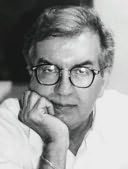- Shopping Bag ( 0 items )
From Barnes & Noble
When Larry McMurtry writes, people read. The Pulitzer Prize-winning author of Lonesome Dove has established his credentials in novels, memoirs, essays, and screenplays. Thus, when he fixes his attention on General George Armstrong Custer (1839-1876), readers instinctively perk up. This generously illustrated biography of the most legendary figure of the West presents not just the fabled Last Stand, but all that led before. McMurtry clearly views Custer as a restless, enigmatic man whose passion for glory was fulfilled only posthumously. In several ways, Custer is a perfect match-up of subject and author; an encounter of two authentic Western spirits.





Overview
ON JUNE 25, 1876, General George Armstrong Custer and his 7th Cavalry attacked a large Lakota Cheyenne village on the Little Bighorn River in Montana Territory. He lost not only the battle but his life—and the lives of his entire cavalry. “Custer’s Last Stand” was a spectacular defeat that shocked the country and grew quickly into a legend that has reverberated in our national consciousness to this day.
In this lavishly illustrated volume, Larry McMurtry, the greatest chronicler...